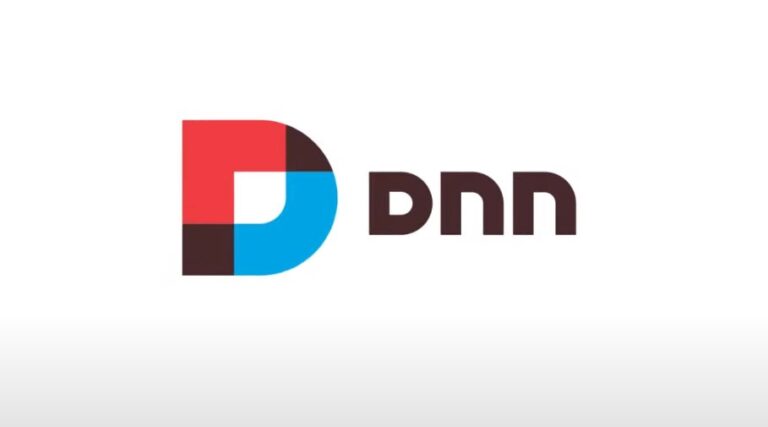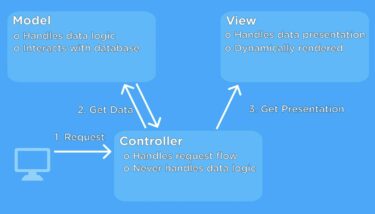Remote Internet Information Services (IIS) stands as a cornerstone in modern IT infrastructure. As organizations increasingly rely on digital systems and remote operations, the need for efficient, secure, and centralized server management has never been greater. Remote IIS addresses this challenge by offering a robust solution that enables administrators to exert control over web servers regardless of their physical location.
The significance of Remote IIS extends beyond its convenience. It empowers organizations with distributed server setups, allowing them to manage their web services seamlessly. For IT professionals, whether they operate within a single organization or provide support for clients worldwide, Remote IIS simplifies the task of overseeing servers scattered across different geographic regions. This technology bridges the gap between physical and virtual server management, offering flexibility and scalability that are crucial in today’s dynamic digital environment.
Why Is Remote IIS Important?
Remote IIS serves as the linchpin of modern server management for several compelling reasons. Firstly, it streamlines server management tasks to an unprecedented degree. No longer does an IT administrator need to be physically present at a server location to perform maintenance, updates, or troubleshoot issues. This remote accessibility translates into significant time and resource savings.
Secondly, Remote IIS substantially reduces the need for physical access to servers. This not only minimizes the risk of physical damage or theft but also supports the ongoing trend towards centralized, cloud-based infrastructure. By providing remote access to server configurations, Remote IIS enables organizations to embrace cloud solutions while maintaining control over their on-premises servers.
Lastly, and perhaps most importantly, Remote IIS enhances security. It allows administrators to maintain and update server security measures without exposing servers to potential physical threats. This chapter will delve deeper into these key aspects and further explore how Remote IIS contributes to cost savings, operational efficiency, and heightened security.
How Does Remote IIS Work?
To appreciate the full potential of Remote IIS, it is essential to comprehend the underlying technologies and protocols that enable remote server management. At its core, Remote IIS leverages HTTP/S, the same protocols that power the World Wide Web. These protocols enable communication between administrators and remote servers, facilitating server configuration, monitoring, and maintenance.
- One of the key components in the functionality of Remote IIS is the Remote Desktop Protocol (RDP). RDP allows administrators to access the graphical user interface (GUI) of a remote server, essentially providing a window into the server’s desktop environment. This graphical access is invaluable when configuring server settings, installing software, or troubleshooting issues that require a visual interface;
- Authentication and encryption play a pivotal role in securing remote connections via Remote IIS. Robust authentication mechanisms ensure that only authorized personnel can access and modify server settings. Additionally, encryption protocols safeguard data transmitted between the administrator’s device and the remote server, preventing unauthorized interception of sensitive information.
In the subsequent sections of this chapter, we will delve into each of these elements in greater detail, providing a comprehensive understanding of the inner workings of Remote IIS.
Setting Up Remote IIS
Configuring and implementing Remote IIS is a precise process that requires careful consideration of various factors. In this chapter, we will provide a detailed, step-by-step guide to help you set up Remote IIS on your servers. By following these instructions, you can establish a secure and efficient remote management environment that aligns with best practices in the industry.
The initial setup of Remote IIS involves several critical tasks:
- Server Preparation: Begin by ensuring that the target server is prepared for remote management. This includes installing the necessary operating system components, enabling Remote Desktop Services (RDS), and configuring network settings to allow remote access;
- Authentication and Permissions: Establish robust authentication mechanisms, such as multi-factor authentication (MFA) and strong password policies, to secure remote connections. Assign appropriate permissions to users or groups to determine who can access and manage the server remotely;
- Firewall Configuration: Adjust firewall rules to permit Remote IIS traffic while maintaining security. Careful firewall configuration prevents unauthorized access and mitigates potential threats;
- SSL Certificates: Implement Secure Sockets Layer (SSL) certificates to encrypt data transmitted between the administrator’s device and the remote server. This step is essential for protecting sensitive information during remote sessions;
- Remote Desktop Client Setup: Ensure that the devices used for remote management have a compatible Remote Desktop Client installed. Familiarize yourself with the client settings and options to optimize the remote experience;
- Ongoing Maintenance: Once Remote IIS is up and running, it is crucial to establish routine maintenance procedures. Regularly update server software, security patches, and review access permissions to maintain the system’s integrity.
Throughout this chapter, we will delve into each of these tasks in detail, providing specific instructions and insights to help you navigate the setup process effectively. Additionally, we will discuss best practices that ensure the long-term reliability and security of your remote management system.
Practical Applications of Remote IIS
Remote IIS offers a diverse array of practical applications that can revolutionize server management. Its flexibility and versatility empower organizations to tackle a wide range of tasks, from hosting and managing websites to deploying complex applications and resolving technical issues swiftly. In this chapter, we will explore numerous scenarios where Remote IIS shines:
- Website Hosting and Management: Remote IIS simplifies the process of hosting and managing websites, making it easier to configure web servers, deploy updates, and troubleshoot issues without physical access;
- Application Deployment: Organizations can leverage Remote IIS to deploy applications across multiple servers, ensuring consistent and efficient distribution;
- Load Balancing: Remote IIS can be employed to configure load balancing for web applications, distributing incoming traffic across multiple servers to improve performance and reliability;
- Server Monitoring: Administrators can use Remote IIS to monitor server health, track performance metrics, and receive alerts about potential issues in real-time;
- Remote Troubleshooting: Troubleshooting server problems becomes more accessible with Remote IIS, as administrators can quickly diagnose and address issues without the need for on-site visits;
- Scalability: Organizations can easily scale their server infrastructure with Remote IIS, adding or removing servers as needed to accommodate changing workloads.
Throughout this chapter, real-world examples and case studies will illustrate how Remote IIS can be a game-changer for organizations across various industries. Whether you’re managing a small business website or a complex enterprise server farm, Remote IIS provides the tools you need to succeed in today’s fast-paced digital landscape.
Security Considerations
Security is the bedrock of effective server management, and Remote IIS is no exception. To maintain the integrity of your remote server management environment, it’s crucial to implement comprehensive security measures. This chapter will delve into essential security considerations and practices when working with Remote IIS.
- Firewalls and Network Security: Robust firewall configurations are fundamental in safeguarding your servers. Restrict inbound and outbound traffic to only necessary ports and IP addresses, reducing the attack surface;
- Authentication Mechanisms: Implement strong authentication mechanisms, including multi-factor authentication (MFA), to ensure that only authorized users can access and manage your servers remotely. This adds an extra layer of protection against unauthorized access;
- User Access Control: Carefully control user access permissions. Grant only the minimum level of access required for each user or group, following the principle of least privilege. Regularly review and update access permissions to align with organizational changes;
- Encryption: Encrypt all data transmitted between the administrator’s device and the remote server using SSL/TLS certificates. Encryption prevents eavesdropping and protects sensitive information, including login credentials and configuration data;
- Security Updates and Patch Management: Keep server software, operating systems, and applications up to date with the latest security patches. Vulnerabilities can be exploited by attackers, so timely updates are crucial;
- Logging and Auditing: Enable comprehensive logging and auditing features in Remote IIS. Regularly review logs to detect and respond to suspicious activities promptly;
- Physical Security: While Remote IIS allows for remote management, physical security remains important. Ensure that physical access to servers is restricted to authorized personnel only;
- Regular Security Audits: Conduct regular security audits and penetration testing to identify vulnerabilities and weaknesses in your remote server management setup. Address any findings promptly.
By implementing these security measures and practices, you can maintain the confidentiality, integrity, and availability of your servers while leveraging the benefits of Remote IIS.
Troubleshooting and Best Practices
Even with a well-configured Remote IIS setup, issues can arise. Troubleshooting is a critical skill for administrators, and this chapter is dedicated to guiding you through common troubleshooting scenarios and providing best practices for maintaining the reliability and performance of your remote server management system. Troubleshooting Remote IIS involves diagnosing and resolving issues related to connectivity, performance, and configuration. It may include:
- Network Connectivity Issues: Identifying and resolving problems related to network connectivity between the administrator’s device and the remote server;
- Authentication Problems: Troubleshooting login and authentication issues, including password resets and MFA challenges;
- Performance Optimization: Identifying and addressing performance bottlenecks that may affect the responsiveness of remote sessions;
- Configuration Errors: Rectifying misconfigurations that could lead to unexpected behavior or errors in server settings;
- Security Incidents: Responding to security incidents and breaches promptly, including reviewing logs for signs of unauthorized access;
- Regular Maintenance: Implementing best practices for ongoing maintenance, including software updates, log management, and access control reviews.
By proactively addressing these aspects, you can ensure the reliability and efficiency of your Remote IIS setup. This chapter will provide detailed guidance and practical tips for effective troubleshooting and maintenance.
Conclusion: Embracing the Power of Remote IIS
In conclusion, Remote Internet Information Services (IIS) is a formidable tool that empowers organizations to efficiently manage their web servers from anywhere in the world. Through a deep understanding of its concepts, benefits, and best practices, you can unlock the full potential of this technology to enhance your server management capabilities.
Remote IIS not only simplifies server management but also offers cost savings, operational efficiency, and heightened security. By embracing Remote IIS, you can navigate the complexities of modern IT infrastructure with confidence, knowing that you have the tools and knowledge to manage your servers effectively, regardless of their physical location. Embrace the power of Remote IIS, and unlock a new level of control and efficiency in your IT infrastructure.












